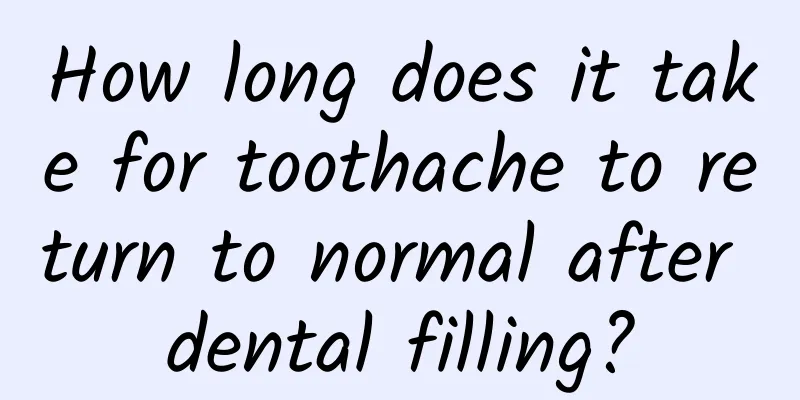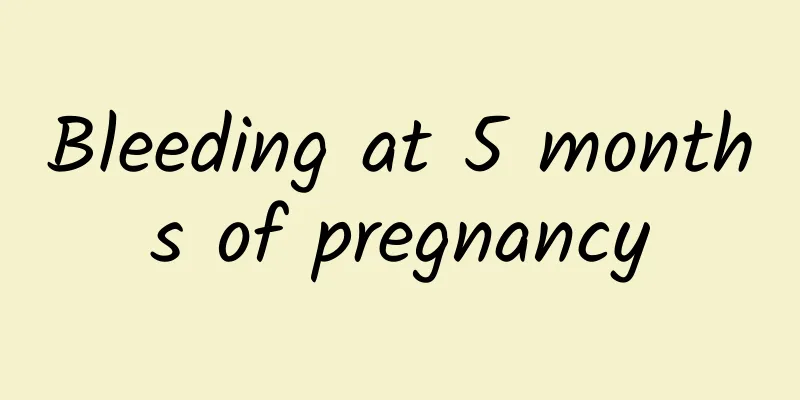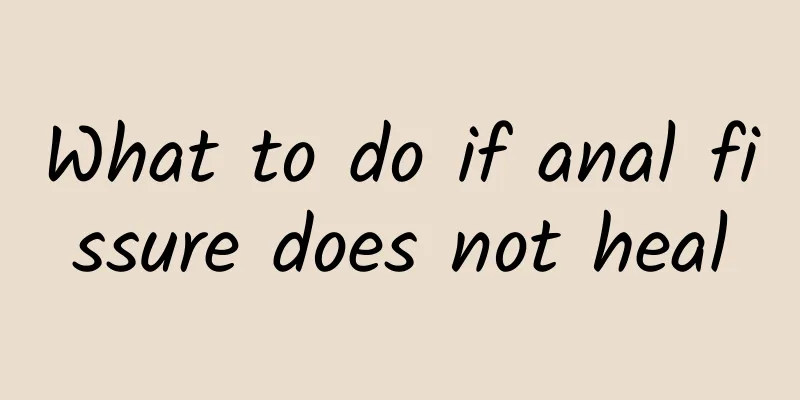How long does it take for toothache to return to normal after dental filling?

|
In general, toothache is caused by tooth decay, which requires filling. Many people still experience toothache after filling. In fact, this phenomenon is quite normal. There will be a one-week adjustment period after filling a tooth. When the filled tooth has adapted, the pain will disappear. In order to relieve the pain after tooth filling, there are some things you need to pay attention to. How long does it take for toothache to return to normal after dental filling? Most patients need a running-in period after a tooth filling. It is normal to experience some pain during this period. Most of the pain symptoms can disappear within a week, but if there is no relief after a week, it is recommended that you go to the hospital as soon as possible to find out if there are other lesions. Pay attention to getting more rest, eat a light diet, try not to eat raw, cold, irritating or greasy foods, and eat more fresh fruits and vegetables. What causes toothache after filling? 1. It is because the pulp is stimulated during the process of preparing the cavity for the filling or the disinfectant. Short-term hot or cold stimulation pain may occur. Such situations do not require special treatment and generally recover on their own after 1-2 days. Second, the caries cavity is deep and the padding material used is thin, which cannot block the hot and cold stimulation conducted by the silver-mercury alloy, resulting in symptoms of hot and cold stimulation pain. This requires thickening the base material before filling. 3. Due to the need for treatment, the dental pulp is devitalized (commonly known as killing the nerves). Toothaches may occur on the day of or the next day after the devitalization drug is applied due to the effect of the drug, but the pain will not be severe and will not last for a long time. Things to note after dental filling 1. Follow the doctor's advice and do not chew food or hard objects with the newly filled teeth. After a tooth is filled, you should generally chew food on the affected side on the 2nd or 3rd day to prevent the tooth from breaking and the filling from falling off. 2. If you experience slight pain after filling a tooth, you can observe yourself first. Some slight discomfort and pain may disappear on their own. If the pain does not ease but worsens, or if biting pain, throbbing pain, pain from hot or cold stimulation, or spontaneous pain at night occurs, you should go to the hospital for follow-up examination and treatment in time to find out the cause and eliminate the pain. 3. For teeth with large areas of severe caries, fractures are prone to occur during chewing due to insufficient resistance of the tooth itself after restoration. Therefore, after filling these teeth, a crown should be placed on the affected tooth in time according to the doctor's advice to prevent fractures. 4. Go for follow-up consultation promptly at the time agreed upon by the doctor. |
<<: What to do if you have toothache after wearing braces
>>: What to do if you have toothache after chemotherapy
Recommend
What to combine with Cuscuta auspiciousness
Cuscuta australis has appeared in many literary w...
What are the methods of moxibustion for treating rheumatoid arthritis?
Rheumatoid arthritis is a disease that worries ma...
What are the medicinal values of Cong Rong?
In traditional Chinese medicine, Cistanche is als...
Can I have liposuction during a caesarean section?
For obese pregnant women, they hope to have lipos...
How to remove the thorns on the feet
A cornea is a skin problem caused by friction and...
Dizziness and nausea after blood draw
Under normal circumstances, this depends on how m...
How many pills should I take at one time?
How to take Ren Dan? It is very easy to get heats...
Can I drink alcohol if I have kidney stones?
Kidney stones are a relatively common type of sto...
What are the functions of infrared therapy lamp? Application of infrared therapy lamp
Infrared therapy lamp is a medical treatment inst...
Causes of yellow warts on eyelids
The skin around the eyes is relatively thin, so t...
Can sand-like gallstones be expelled? Chinese medicine is effective in expelling stones
Mud-like gallstones are a very common type of gal...
Symptoms of brain retardation
For everyone, the most important stage in life is...
Triamcinolone acetonide hydrochloride injection
Triamcinolone acetonide acetate injection is an i...
How to judge hair follicle necrosis
Having thick hair is the wish of many people, esp...
Can sweating during steaming help you lose weight?
Having a slim figure and tender skin is what girl...









